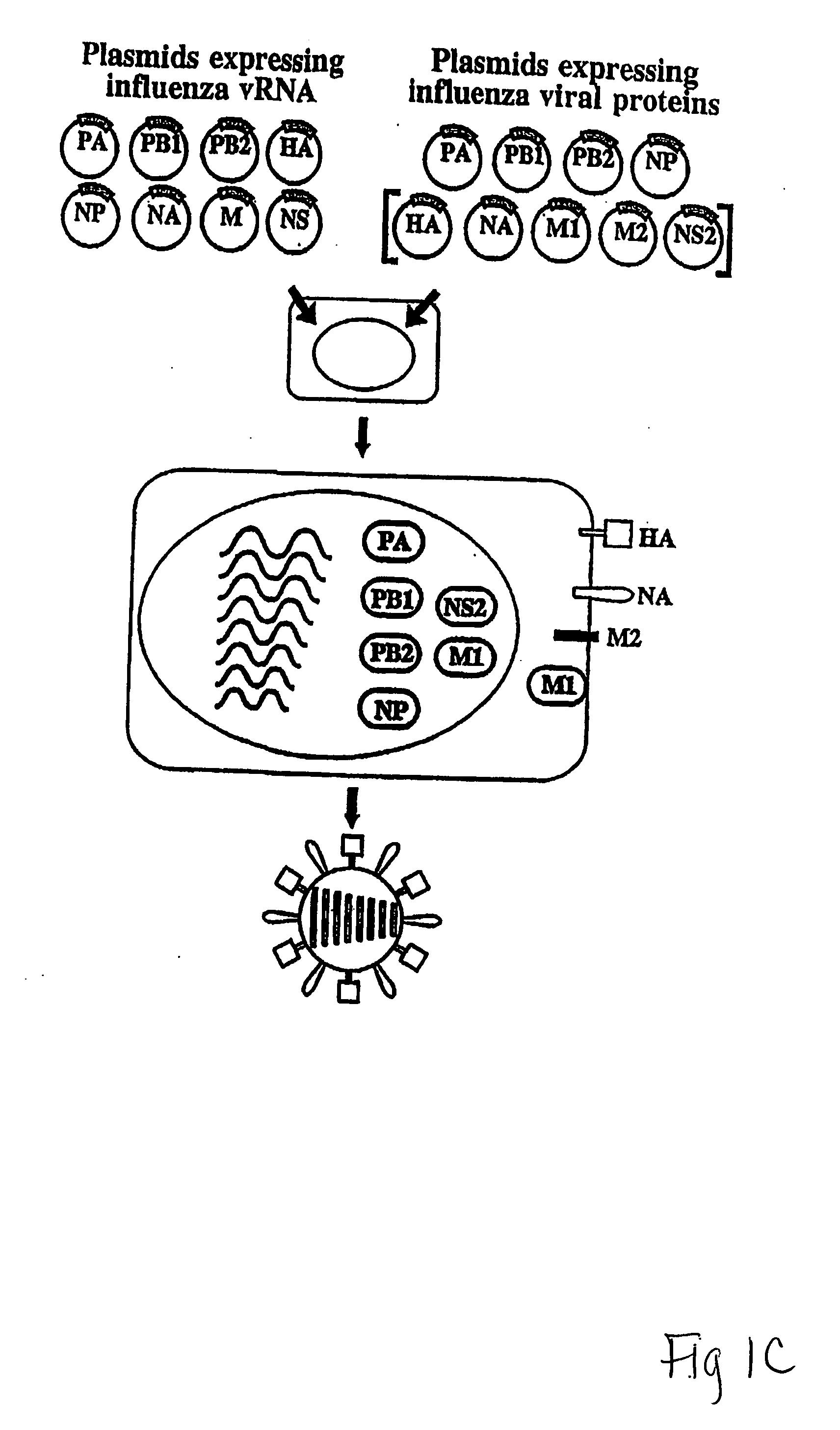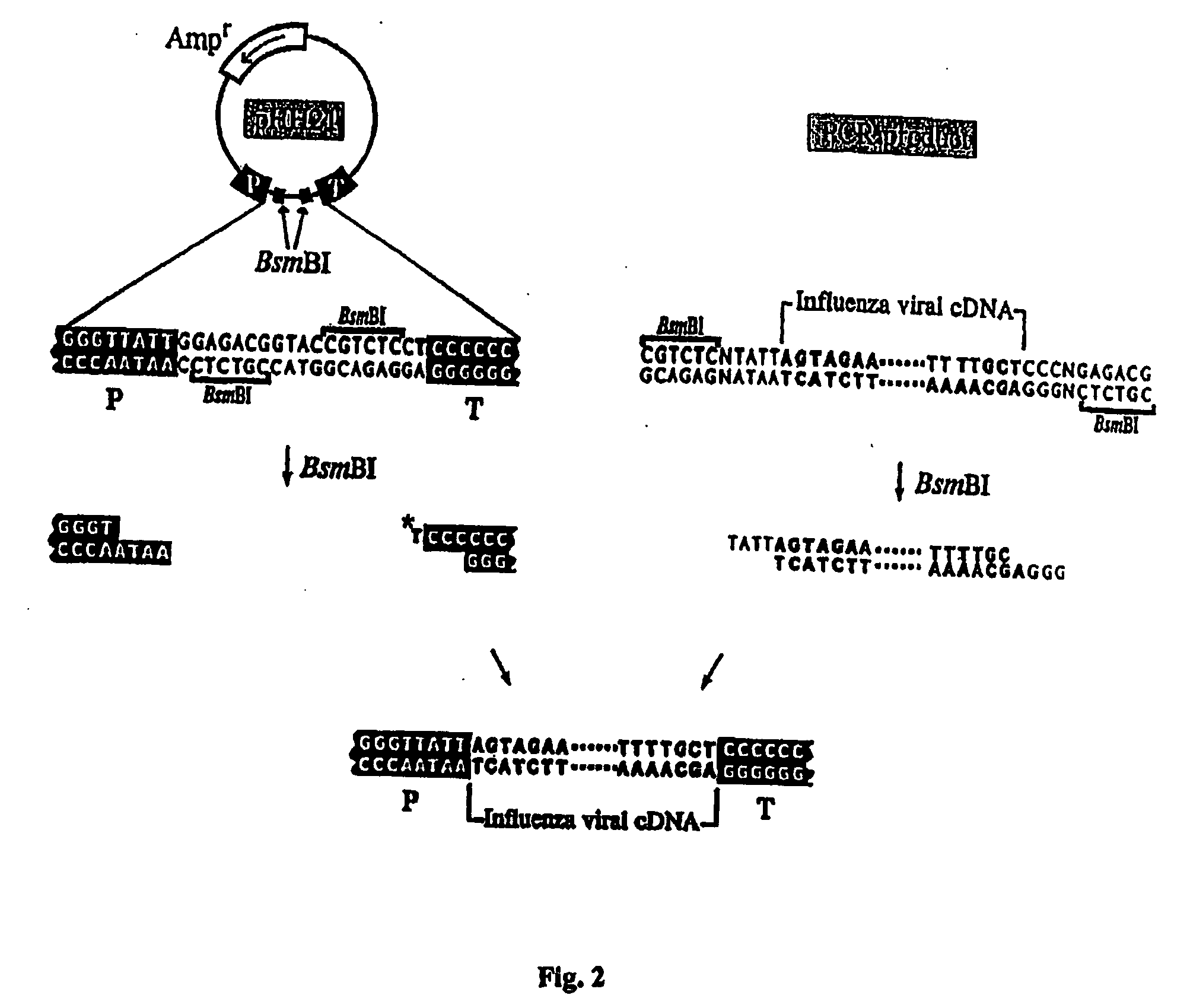Recombinant influenza vectors with tandem transcription units
a technology of tandem transcription unit and recombinant influenza, which is applied in the field of recombinant influenza vectors with tandem transcription unit, can solve the problems of time-consuming and cumbersome, millions of influenza-related deaths, and lethal outcomes, and achieve the effect of efficient and robust generation
- Summary
- Abstract
- Description
- Claims
- Application Information
AI Technical Summary
Benefits of technology
Problems solved by technology
Method used
Image
Examples
example 1
[0103] The genome of influenza A or B virus is an 8-segmented single negative strand (C has only 7 segments). Two of the genes that are critical for virus infection, as well as for strategies to develop vaccines for influenza, are the hemagglutinin (HA) and neuraminidase (NA) genes. Entry into a host cell is facilitated by binding of the HA spikes to mucoproteins containing terminal N-acetyl neuraminic acid (sialic acid) groups. Classical influenza vaccines are usually made by melding the HA and NA genes, along with six other genes from a “harmless” master strain. This process is very time consuming and is often prone to low titers during vaccine development. A methodology that allows one to generate synthetic influenza virus by reverse genetics has been employed to prepare viruses, e.g., the recombinant virus contains HA and NA genes from pathogenic strains and 6 genes from a master strain are assembled. In particular, these cloned genes, along with proteins necessary for replicati...
example 2
[0120] To improve recombinant virus production, one approach is to clone cDNAs encoding all eight viral genes into a plasmid. Thus, instead of generating 8 viral RNAs from eight plasmids, the transcription unit for the synthesis of the viral RNAs can be combined on one plasmid; hence, all eight viral RNAs are made from only one plasmid, allowing virus rescue from fewer plasmids. Likewise, the transcription units for the synthesis of viral proteins can be combined on fewer plasmids. If all 8 viral genes are similarly placed in 1 plasmid, the number of plasmids required for synthesis of influenza virus is 5 (1 plasmid for all viral genes and 4 plasmids for genes encoding PB2, PB1, PA, and NP). Alternatively, one can combine PB2, PB1, PA, and NP genes into 1 plasmid, each gene flanked by a RNA polymerase II promoter and a polyadenylation signal. Furthermore, all viral genes and PB2, PB1, PA, and NP can be combined into 1 plasmid. Other combinations can include 1 plasmid with six viral ...
PUM
| Property | Measurement | Unit |
|---|---|---|
| Volume | aaaaa | aaaaa |
| Volume | aaaaa | aaaaa |
| Angle | aaaaa | aaaaa |
Abstract
Description
Claims
Application Information
 Login to View More
Login to View More - R&D
- Intellectual Property
- Life Sciences
- Materials
- Tech Scout
- Unparalleled Data Quality
- Higher Quality Content
- 60% Fewer Hallucinations
Browse by: Latest US Patents, China's latest patents, Technical Efficacy Thesaurus, Application Domain, Technology Topic, Popular Technical Reports.
© 2025 PatSnap. All rights reserved.Legal|Privacy policy|Modern Slavery Act Transparency Statement|Sitemap|About US| Contact US: help@patsnap.com



